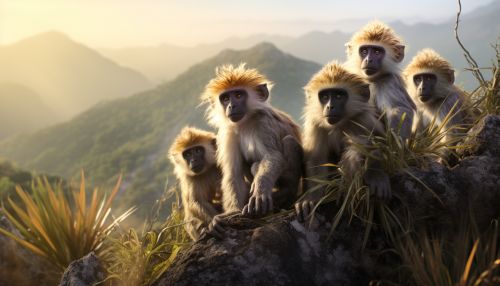Haplorhini
Taxonomy and Evolution
The Haplorhini or haplorhines are a group within the primates that includes the tarsiers and the simians. The simians are further divided into the New World monkeys (Platyrrhini) and the Old World monkeys and apes (Catarrhini). The haplorhines are distinguished from the strepsirrhines by their higher reliance on vision and their diurnal activity, among other characteristics.


Characteristics
Haplorhines share a number of physical characteristics that distinguish them from the strepsirrhine "wet-nosed" primates (the other suborder of primates), which are the lemurs, lorises, and galagos. Haplorhines have a dry nose (rhinarium), and they rely more on vision than on smell. They have a postorbital plate, a bony wall behind the eye socket, to protect their eyes. They also have a larger brain-to-body ratio.
Behavior and Ecology
Haplorhine social behavior and ecology is very diverse, ranging from solitary to pair living to living in large multi-male/multi-female groups. Many species are arboreal, but there are also terrestrial species like the baboons. Some species are omnivorous, while others are specialized frugivores or insectivores.
Fossil Record
The fossil record of haplorhines is more complete than that of strepsirrhines, and they are known from the Paleocene onwards, with the earliest known members being the omomyids. The Aegyptopithecus, an early haplorhine, lived about 35 million years ago and had already developed the typical haplorhine features.
Classification
The haplorhine suborder is divided into two infraorders, the Tarsiiformes (tarsiers) and the Simiiformes (monkeys and apes). The Simiiformes are divided further into the parvorders Platyrrhini (New World monkeys) and Catarrhini (Old World monkeys and apes).
